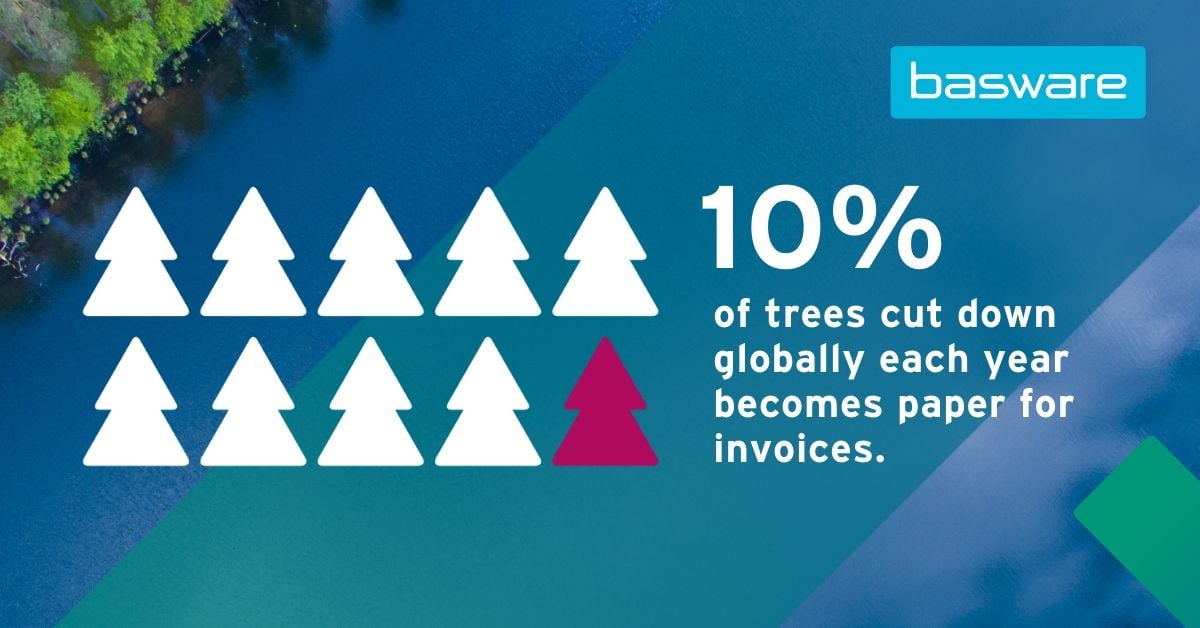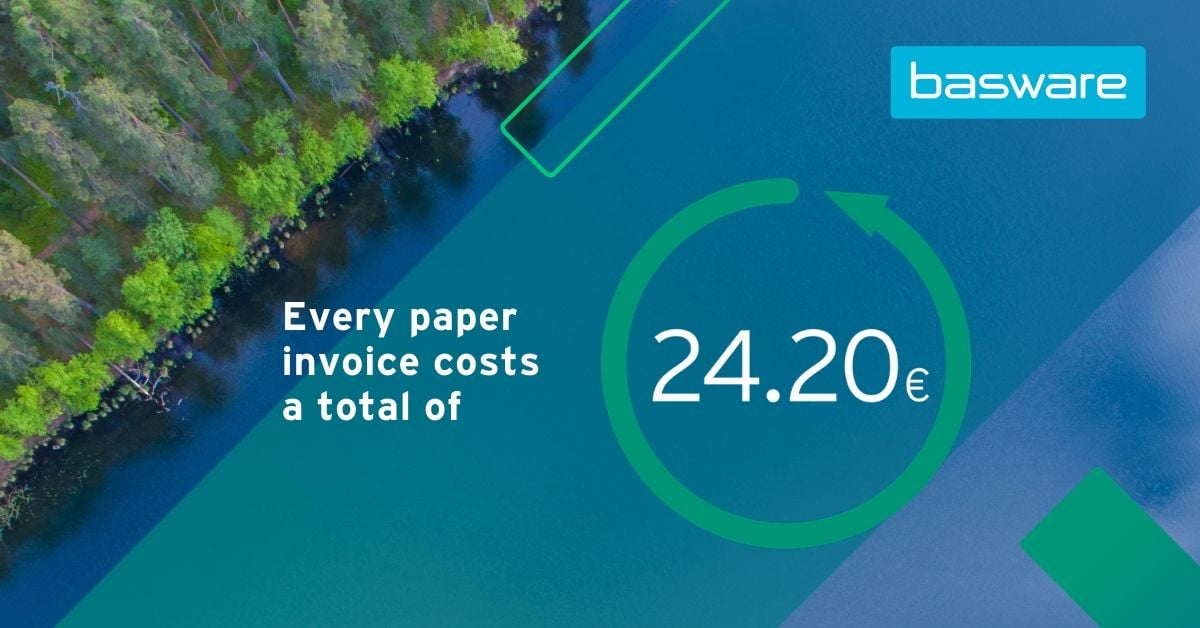- Blog
- Go paperless with electronic invoicing – your organization and the environment will thank you
Go paperless with electronic invoicing – your organization and the environment will thank you
Paper invoices are expensive, labor-intensive and time-consuming to process, even during the best of times. During times of uncertainty, they add even more time and cost constraints. Learn how going paperless with electronic invoicing not only saves your organisation time and money while keeping your operations running smoothly, but can also have a long-term, significant impact on the environment.
No matter how big or small your organisation, or how many invoices your AP team processes annually – if you are still relying on paper invoices and manual processes, you are likely facing several challenges. These challenges include, high cost of invoice processing, lengthy payment cycles, unnecessary errors and exceptions, increased supplier payment status inquiries, late payments…any of this sound familiar?
And by the way, these are true during the best of times, so when you consider a time like the current global crisis, the cost and complexity only increases. Organisations are currently experiencing delays in receiving mail, most employees are working remotely and don’t have easy access to paper documents, and some suppliers are looking to on-time or even accelerated payments just to stay in business. The impact of paper invoicing is severe and far reaching.
Let’s do the math
But what most organisations overlook is that paper invoicing has consequences far beyond just process inefficiencies and higher costs. The environmental impact of invoicing is not often factored into the equation.
Consider this, 10% of trees cut down globally becomes paper for invoices. And the disproportionate amount of energy required to produce these invoices equals the annual energy consumption of 20 million households. If you are an organisation receiving 20,000 invoices a year, that amounts to 96 trees, 300 tons of water, and 24 tons of CO2 annually. Globally, 70% of invoices are still sent in paper format – that’s a lot of trees, water, energy, and CO2 emissions.

So, what does it take to make the switch from paper-based systems to electronic invoicing, to positively impact your organisation and the environment? According to the Billentis, the cost of processing a paper invoice manually is €17.60. And it doesn’t stop there. It can cost your supplier an additional €6.60 to send that paper invoice. By receiving and processing invoices electronically, you can reduce the cost per transaction of an invoice by 64% from €17.60 to just €6.40.

A Hackett Group study further identified that electronic invoicing results in significant improvements in on-time payments and invoice matching, as well as reduction in time spent on supplier inquiries.
Improving green credentials
Electronic invoicing is also an opportunity for organisations to improve their green credentials by reducing CO2 emissions. A recent scoping study by Basware into the carbon impact of electronic invoicing revealed that switching from paper-based systems to our electronic invoicing services results in an estimated 36% reduction in emissions.
Basware recently introduced a sustainability dashboard in our analytics application, which shows customers their average CO2 index/invoice, enabling them to benchmark their index over time or against other organisations in our Network.
If you haven’t already, it is time to evaluate options to go paperless with electronic invoicing. In the short-term, it will save your organisation time and money and enable your AP staff to work from wherever needed. Which allows your strategic and smaller suppliers to be paid on time or even early, strengthening the supply chain. In the long-term, you will make a significant contribution towards protecting the environment.
Basware's CO2 Dashboard
Basware now has introduced a CO2 Dashboard as part of the Basware Analytics KPI. The carbon footprint index is calculated based on the environmental impact of different invoice receiving methods. Companies can follow the development of their own CO2 index over time, as well as benchmark against the average carbon footprint within the Basware community. The dashboard also estimates how many trees or water you've saved or could save if you onboard more suppliers to e-invoicing. Companies can also view improvement potential per month.
Keep reading.
Help your organisation break the shackles of slow, manual, outdated AP processes and release more working capital, time, and business potential. Learn more in our ebook. And see the full picture of e-invoicing in our infographic here.
Related
-
By Basware RepresentativeAccelerate Your Business Growth with Basware AP Automation: Fast Track to Value
-
By Basware RepresentativeUnveiling CFO Strategies for Long-Term Value Creation – Webinar Insights
-
By Anu HämäläinenUnlocking the Power of AI in Finance: A Dive into Invoice Ingestion Revolution
-
By Christopher BlakeComplexity to Clarity: Forrester's Expert Take on AP Invoice Automation
-
By Anu HämäläinenThe Evolution from OCR: It's Time for a Change
-
By Christopher BlakeChoosing AP Excellence: Finding the Right Solutions Amid S2P Suite Challenges
-
By Basware RepresentativeUnlock the Power of Invoice Digitalization: Watch Our On-Demand Webinar Now!
-
By Daniela MerkWebinar: Moving Beyond Legacy Solutions - Embrace the AI-Powered Financial Revolution on October 11th!

